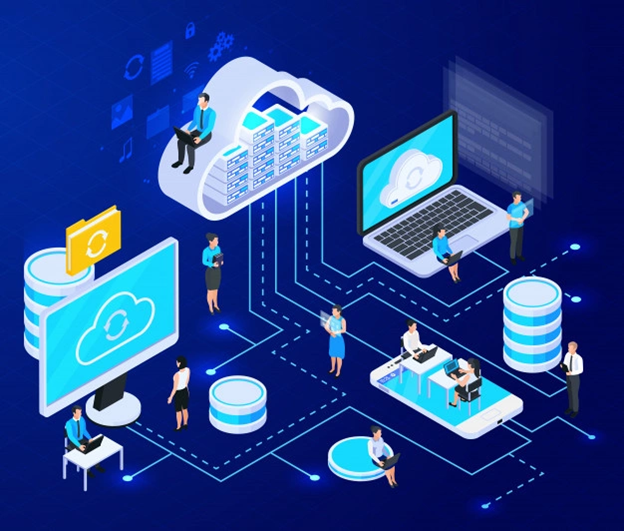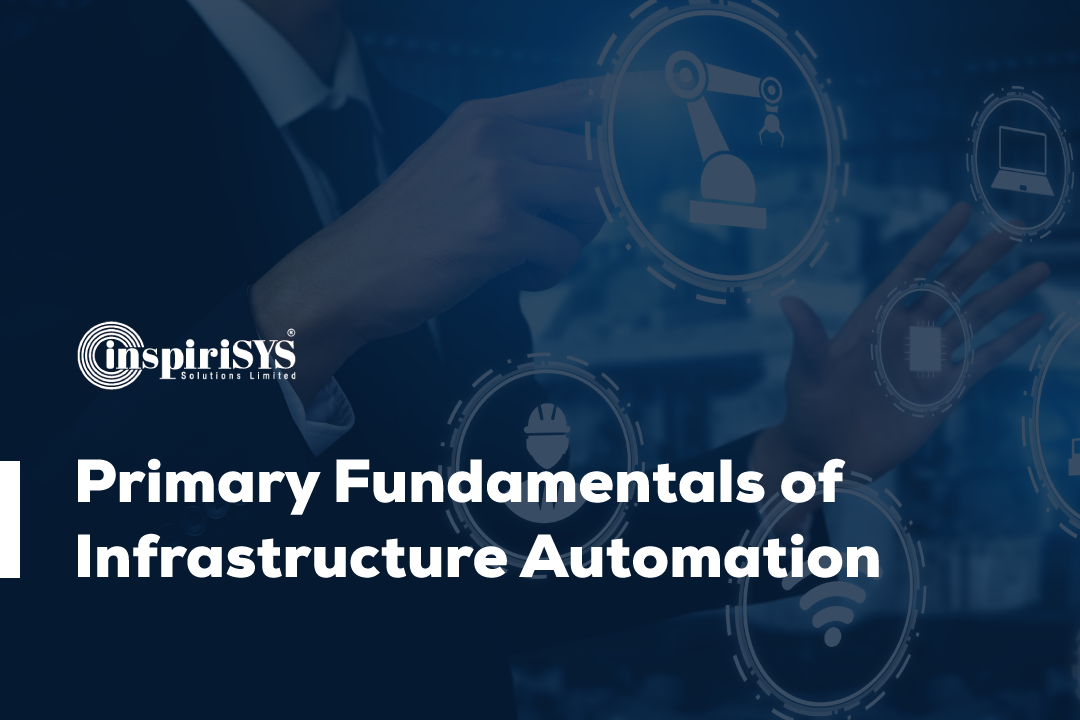Most IT organizations today are constantly growing in their infrastructure size and complexity. Having limited time and resources makes it difficult for IT teams to keep up with the infrastructure growth, causing delayed updates, patching, and resource delivery. When automation is applied to common and repetitive management tasks, such as resource provisioning, configuration, deployment and decommissioning, you can get greater visibility into your infrastructure along with direct tangible benefits like Error Reduction, Effort Reduction And Cycle Time Reduction.
Infrastructure Automation through cloud-native technology is something that IT companies are still getting used to. While infrastructure automation tools are certainly not new to the market, the evolution of this technology is still something that companies need to adapt to.
This blog lists some of the primary fundamentals that support modern approaches to Infrastructure Automation. They are:
Containers and Orchestration
Containers are the average units of a software that bundle up code and its dependencies for the application to run smoothly in any environment. They stimulate the operating system on the computer and can run on private, public and personal devices. Containerization allows the development teams to operate at a fast, efficient and much larger scale. It separates the responsibilities of developers and IT operators. Containers provide developers with a view of the operating systems as they are logically separated from other applications.
Orchestration is the management of multiple computer systems and coordination of multiple tasks, services and applications to perform a large workflow. It aims to optimize and streamline the repetitive processes. To make output-based decisions from one automated task to coordinate and figure out the subsequent task, an Orchestration system needs to react to events throughout the process. For complex tasks, the Orchestration needs specialized tools and enormous data to create, handle, monitor and securely run the pipelines. These are commonly separate from the machine learning tasks. Orchestration tools can help with:
-
Incorporating a wide range of applications and systems.
-
Reducing the complexity of creating workflows, which are difficult to achieve otherwise.
-
Managing and looking after the operations, from a single/ remote location by assembling end-to-end processes.
Immutable Infrastructure: The cloud-centric technologies mentioned here have paved the way for immutable infrastructure. In this infrastructure, once a server is created and deployed, it can never be changed. If the infrastructure needs to be upgraded, a brand new server has to be created. If any errors are found in the new servers it is aborted and then tried again. This kind of infrastructure can be automatically spun up or down through tools like Kubernetes. Kubernetes will allow administrators to declare the states they want for their applications and infrastructure. This allows the orchestration platform to manage them in a highly automated fashion. Your organization then has a concept of separate versioning, which lets you benefit from a simpler infrastructure and lowers risks.
Microservices Infrastructure: Microservices are an organizational and structural method of software development where software is made up of small independent services that interact over well-defined Application Programming Interfaces (APIs).
Using microservices architectures, it becomes easier to scale and faster to develop applications, enabling innovation and accelerating time-to-market for new features. A microservices architecture builds an application as independent components. These components run each application process as a service. These services are developed for business efficiencies and each service executes a single function.
Benefits of Microservices
-
Agility- Microservices nurture an organization and empower every member of the team to work quickly and more independently. Teams act in a specified and well-understood environment which reduces the time of development cycle, giving you significant business benefits.
-
Flexible Scaling- Microservices enable teams to reduce the size of infrastructure needs, keep up availability when services have a rise in demand and precisely measure the cost of a feature. They allow each service to scale independently to meet demand for the application they support.
-
Easy Deployment- Microservices allow organizations to experiment and the low cost of failure makes it easier for them to update codes and try out new features. If anything goes wrong the organization can roll back at any time.
-
Technological Freedom- Microservices allow teams to freely choose the best tools to solve their specific problems for every job.
-
Reusable Code- A code written for a certain function can be used as a building block for another feature. Dividing software into small modules allows teams to use it for multiple purposes and helps developers create capabilities without writing from scratch.
-
Resilience- Microservices take good care of applications in the case of total service failure by not crashing all applications but stopping the functions partially.
CI/CD, build pipelines, and build artifacts

A CI/CD pipeline is a series of orchestrated steps which includes creating, packaging, testing, validating, verifying and implementing with the ability to take source code all the way into production. There can be multiple pipelines required to achieve this goal depending on the organization and team structures. A change in code or some sort of event can trigger the CI/CD pipeline. CI(Continuous Integration) is the process of automating the integration of code changes from different contributors in a single software. CD(Continuous Delivery) is the process in which code changes are prepared automatically for a release to production.
Teams can get a clear understanding of what is required to get their ideas into production by adopting a systematic approach with a CI/CD pipeline.
These pipelines are planned well in advance and anything that slows down the process can easily be identified and looked after.
Cloud-native tools

Cloud-native tools aim to help companies build end-to-end technology for creating, installing, monitoring and deploying cloud-native applications. Every organization, regardless of its infrastructure, is said to be cloud-native if it builds and works on software applications using cloud-native tools.
Some of these cloud-native tools targeted towards specific aspects of cloud native environments are:
-
Developers Tools- These come pre-installed in every web browser and provide the data and status of the page.
-
CI/CD Tools- They are a collection of practices enabling the application development teams to deliver code changes more securely and frequently.
-
Network Tools- Help in the building, maintenance and distribution of wireless networks.
-
Service Mesh Tools- They are used to add security and to look after the functionality of cloud-native applications.
How to get started with Infrastructure Automation

-
Self-service Cloud- Self-service cloud computing is a form of private cloud service where the customer provisions storage and launches applications without going through an external cloud service provider. Users can access a web-based portal, to launch applications and request servers using a self-service cloud.
-
Kubernetes Automation- Kubernetes is a portable, extensible, open-source platform for managing containerized workloads and services, that facilitates both declarative configuration and automation.
-
Multi-Cloud Automation- It extends self-service automation to multiple public clouds.
-
Network Automation- It is the process of automating the configuration, testing, installing,operatinginstalling, operating and managing of virtual and physical devices in a network. Network service availability improves with everyday network tasks and functions.
-
DevOps for Infrastructure- It is the combination of tools, practices and cultural philosophies that increase your organization's ability to deliver applications and services.Itservices. It empowers your Infrastructure as Code platform with support for infrastructure pipelining.
Why Inspirisys
Businesses today demand a lot more from your IT infrastructure, and you need to adapt to the latest automation solutions to keep up. InspiriSYS is geared to future-proof all your core applications and infrastructure with its best-in-class infrastructure automation solutions.
With over two decades of experience in providing end-to-end infrastructure services, we have the talent and tools to create, run, and manage next-generation IT architecture. Get in touch with us to automate your IT infrastructure and enhance your business productivity today.







